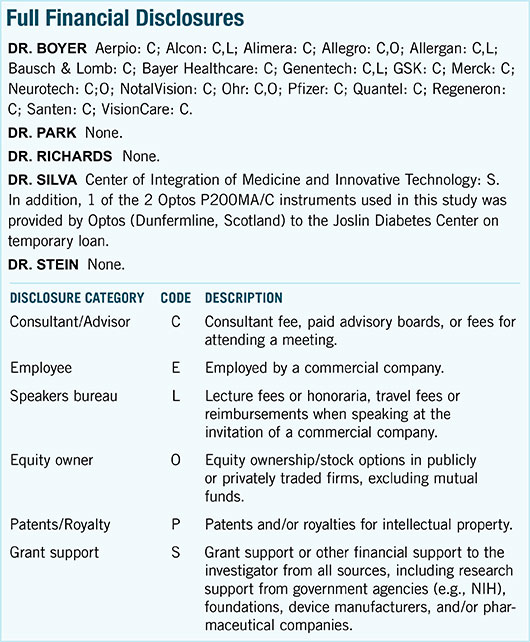Download PDF
With end-stage age-related macular degeneration (AMD), patients have exhausted medical or surgical treatment options. One device that—along with appropriate rehabilitation—may help them cope with central visual loss is the implantable miniature telescope (IMT; VisionCare Ophthalmic Technologies). An extended follow-up study on patients from the original 24-month clinical trial reported that visual benefits persisted for 5 years after the surgery, along with an acceptable safety profile.1
What is it? The IMT is a fixed-focus quartz glass lens with wide-angle micro-optics, which is implanted behind the iris through a 12-mm incision after the natural lens has been removed. The device produces a telephoto effect that enlarges objects in the central visual field, with the trade-off of reduction in peripheral vision; thus, it is implanted in only 1 eye to allow the other eye to compensate.
The IMT won FDA clearance in 2010 for use in patients 75 years or older with advanced, bilateral AMD. In October 2014, the indication was expanded to include patients aged 65 and older.
Data supportive of expanded indication. In a subgroup analysis in the extension study, the investigators stratified the results by age at implantation: 65 through 74 years old (n = 31) and 75 years and older (n = 32).
According to study coauthor David Boyer, MD, “Now we have long-term safety data showing that the implant can be placed in people 65 to 74, and they do extremely well. In fact they do better than the original group of patients, age 75 and above.” Dr. Boyer, a vitreoretinal subspecialist, is a clinical professor of ophthalmology at University of Southern California Keck School of Medicine.
Retained acuity gains. Compared with baseline vision, the mean gains in best-corrected distance visual acuity (BCDVA) with the IMT were similar between the age groups in the original 24-month study: 3.1 lines in patients 75 years and up, and 3.3 lines in younger patients. But at 60 months, the older patients had retained less of their IMT-aided acuity; their mean gain in BCDVA from baseline measured 2.1 lines, compared with 2.7 lines in the younger group.
Gains of 3+ lines. At 60 months, 58.1% of patients in the younger group had gained 3 lines or more of BCDVA, compared with 37.5% of the older group.
Effect on corneal health. One of the most important long-term safety concerns was the effect of the device on the corneal endothelium. The authors reported that the mean annual endothelial cell loss in eyes implanted with an IMT was about 3%, which is consistent with the annual chronic mean cell loss (2.8%) reported after large-incision cataract surgery. At 60 months, younger patients had a mean endothelial cell count of 1,552 cells/mm2 (95% CI 1,325-1,779); in the older group, cell density was 1,576 (95% CI 1,333-1,819).
“Having this long-term safety data for the cornea should make ophthalmologists feel much more comfortable putting this device in,” Dr. Boyer said. “Prior to this, we didn’t know long term if the corneas were going to decompensate or whether there would be a need for corneal transplants,” he said. “But, overall, the loss of endothelial cells seemed very, very small, and consistent with the old style of cataract surgery where we made very big incisions.”
—Linda Roach
___________________________
1 Boyer D et al. Clin Ophthalmol. 2015;9:1099-1107.
___________________________
Relevant financial disclosures—Dr. Boyer: VisionCare Ophthalmic Technologies: C.
For full disclosures and disclosure key, see below.

More from this month's News in Review